People all across the world, including in the United States, love watching woodpeckers. They are a highly varied species, and they provide your landscape with a lot of color and character.
There are more than 200 species of woodpeckers worldwide, but only 22 species may be found in the United States.
For woodpeckers and other birds, Pennsylvania’s enormous geographic diversity provides a variety of places to call home.
There are many possibilities to see colorful and unusual woodpeckers in Ohio, thanks to Lake Erie to the northwest, the Appalachian Mountains in the middle, and the state’s widespread marshes and woodlands.
To learn more about the Woodpeckers in Pennsylvania, continue reading.
In this article, you will learn about the seven species of Woodpeckers found in Pennsylvania, along with the eight species that migrate to the state in the winter season.
| Image | Name |
|---|---|
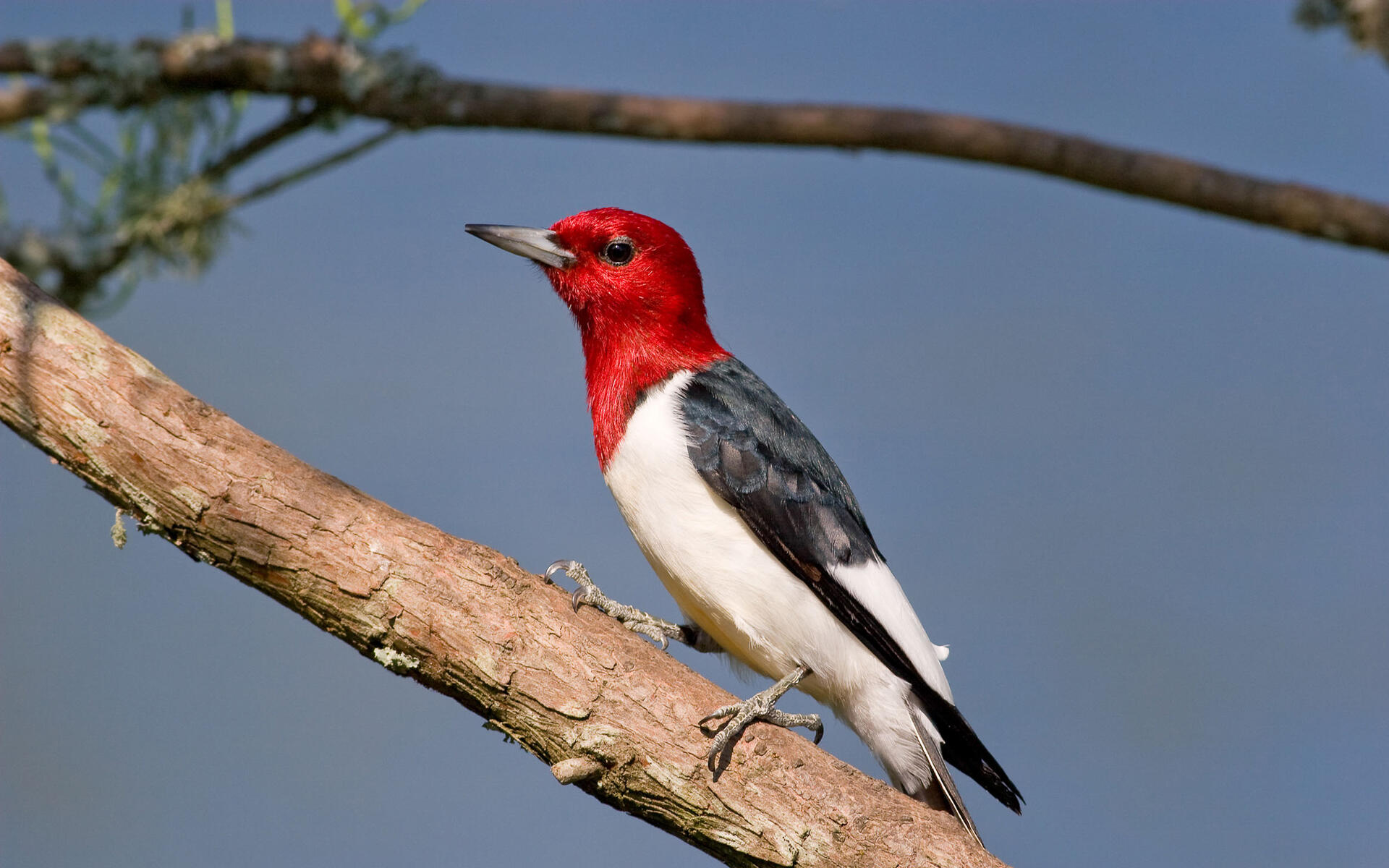 | Red-Headed Woodpecker |
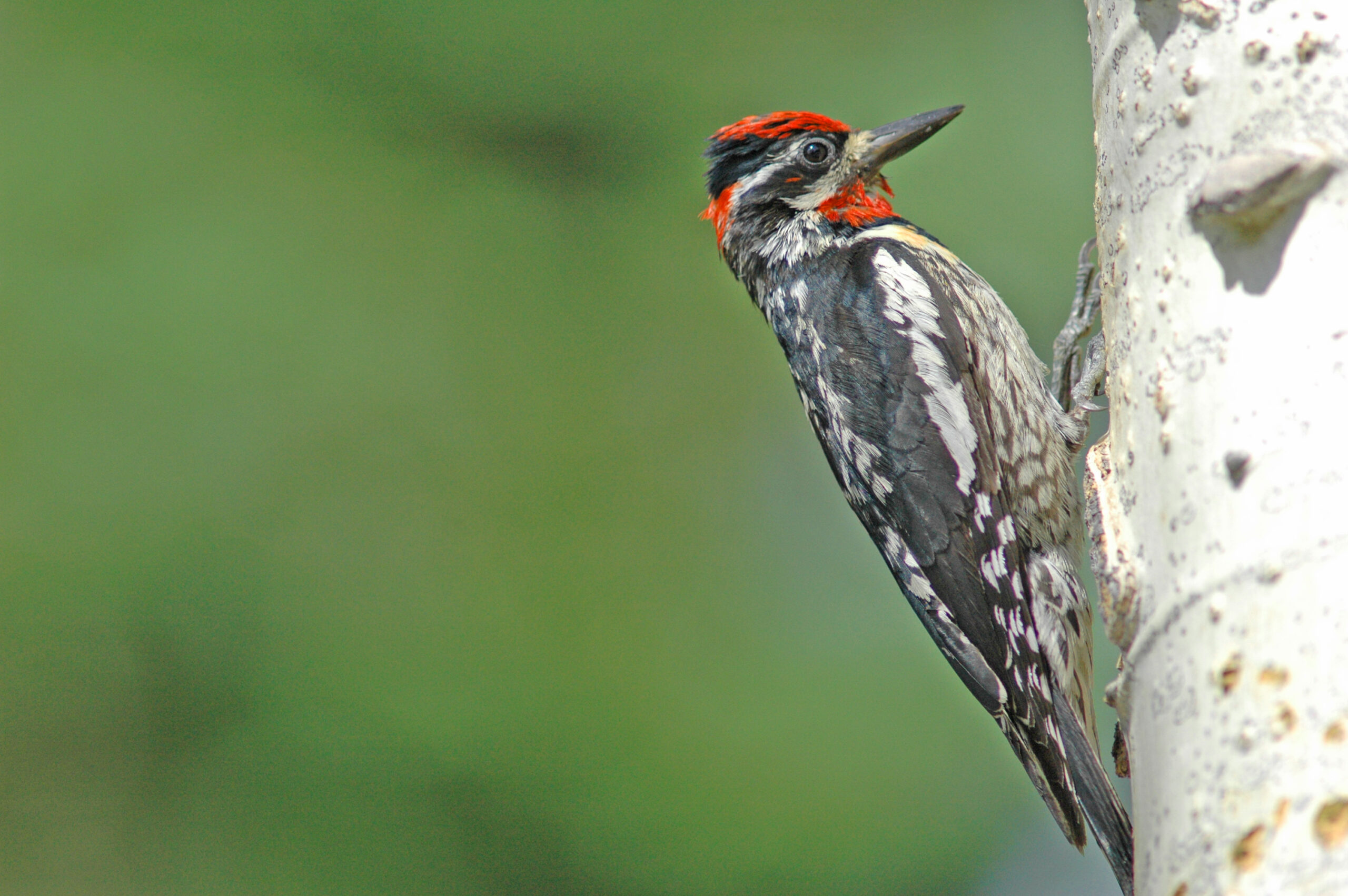 | Yellow-Bellied Sapsucker |
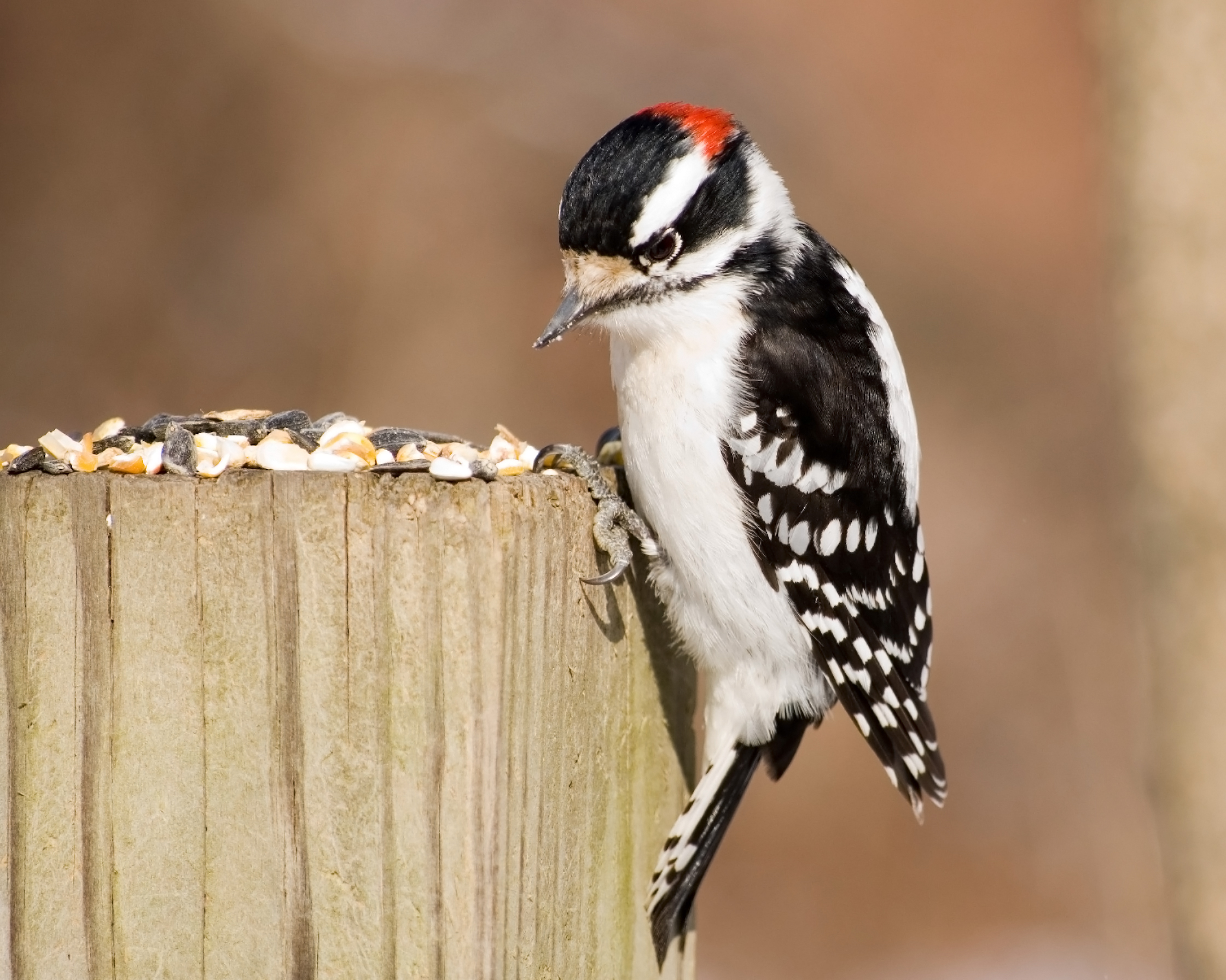 | Downy Woodpecker |
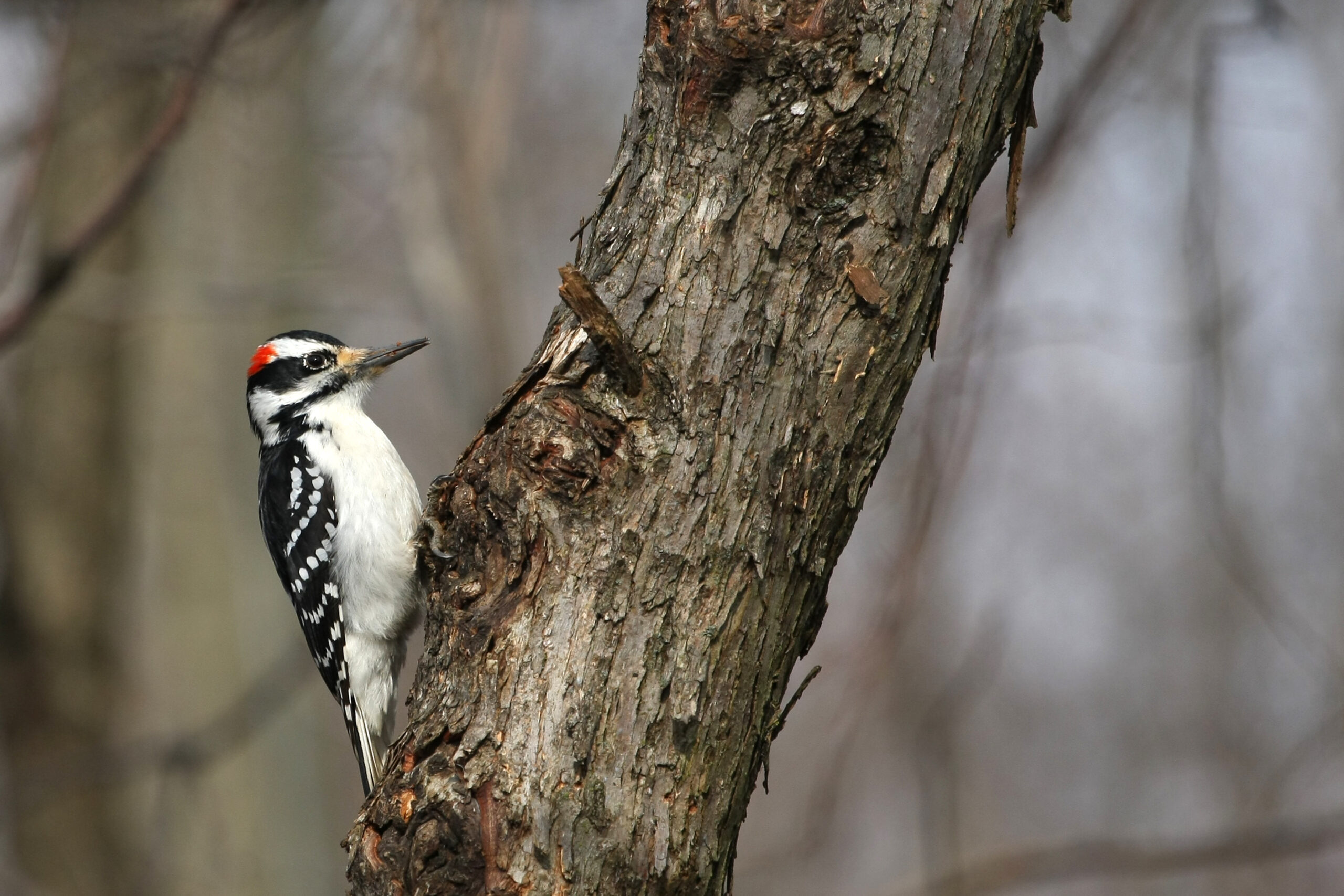 | Hairy Woodpecker |
 | Northern Flicker |
 | Pileated Woodpecker |
 | Red-Bellied Woodpecker |
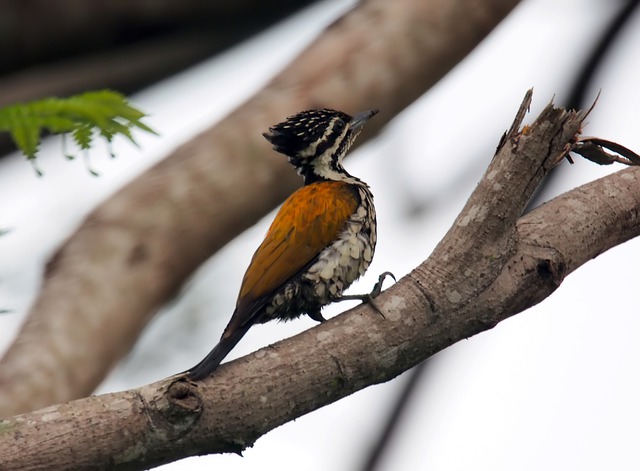 | Black-Backed Woodpecker |
Different Species of Woodpeckers in Pennsylvania
1. Red-Headed Woodpecker
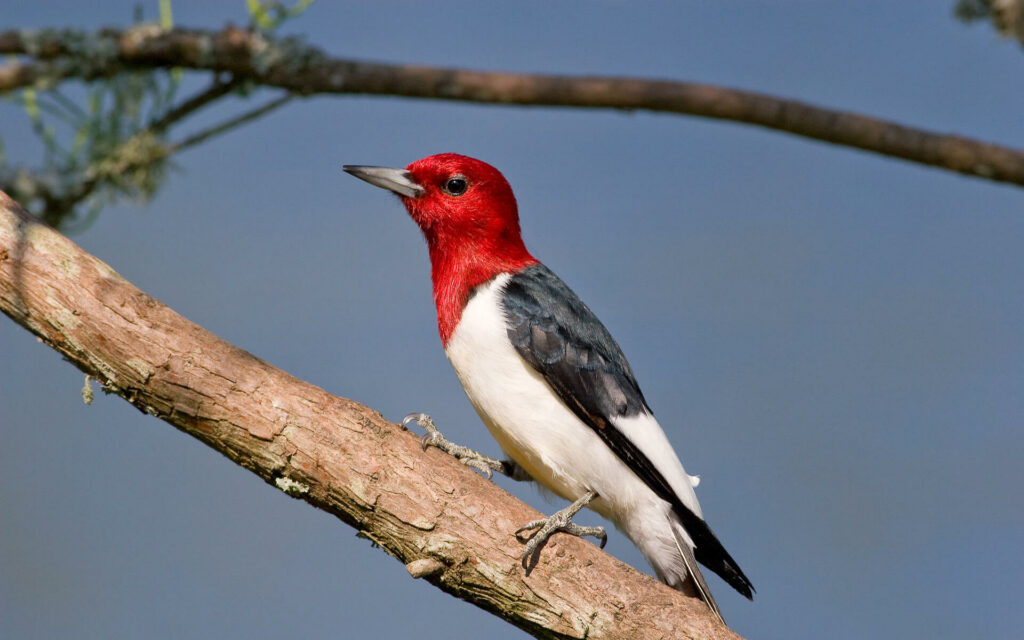
Although its wingspan may measure up to 16 – 18 inches (40.6 – 45.7 centimeters) wide, these woodpeckers typically measure 8 to 9 inches (20.2 to 22.8 centimeters) in length.
One of the most exquisite woodpeckers you may discover in Pennsylvania is the Red-Headed Woodpecker.
Lifespan And Reproduction
Their Lifespan can be 12 years or more.
The majority of woodpeckers, according to researchers, are monogamous. It is speculated that woodpeckers may also practice polyandry for this reason.
Size
When they build their nest, they carve a hole in the tree that is between 2.4 and 24.3 meters (approximately 8 to 80 feet) high. These nests are built by both male and female birds.
However, the males undertake the majority of the excavating. About 7.8-23.6 inches (20-60 cm) will be the depth of the cavities.
Together, the male and female will sit on the eggs. Incubation lasts for 12 to 14 days. The chicks’ eyes open in around 12–13 days, and they leave the nest when they are 24–31 days old.
In fact, the parents will ultimately drive the chicks away if they choose to remain too close to the nest.
2. Yellow-Bellied Sapsucker

The Red-Headed Woodpecker and Yellow-bellied Sapsucker are similar in size. Its length is around 7-8 inches (17.7–20.3 cm), while its wingspan is about 14 inches (35.5 centimeters).
Color
The bird’s head is brighter than the underbelly, which has lighter yellow feathers. In males, the neck and the top of the head are both a vivid red color.
In females, the red stripe down the throat is absent, and just the head is red. The remainder of the head is colored in black and white.
Lifespan And Reproduction
7 Year maximum lifespan.
Nests will be built in the months of April and May. They will bore a hole into a tree 8–40 feet/2.4–12.2 meters up in order to build a nest.
Aspen and red maple trees are the most likely to be chosen by them because of their delicate wood composition. Additionally, they will pick hardwood trees that have been affected by the tinder fungus. The nests have a gourd-like form.
As a bonding activity, they will also take part in the traditional tapping of the tree.
The incubation period is between 12 and 13 days long. The eggs will be incubated by both parents, although the male will sit on them more frequently, particularly at night. In 25–29 days, the fledglings will depart the nest.
3. Downy Woodpecker

Even more little, Downy Woodpeckers only grow to a length of 5 to 6 inches (12.7 to 15.2 cm) and a wingspan of 11 to 12 inches (28-30.4 centimeters). These woodpeckers are the tiniest in all of North America due to their extreme diminutiveness.
They resemble the Small Hairy Woodpecker quite closely. They even have mask-like black marks around their eyes.
The red spot on the back of the males’ heads, which the females don’t have, allows you to tell them apart from each other.
The Downy Woodpecker, in contrast to other woodpeckers, has a small beak that looks like a chisel. Actually, the beak is narrower than the breadth of its head.
Lifespan And Reproduction
Lifespan: 12 years or more
From January through March, these monogamous woodpeckers will establish breeding pairs. Together, they will graze until the time comes for incubation.
The couples will remain paired up for the duration of the summer, and some have been known to mate once more the following year.
Downy Woodpeckers often dig their nests into rotten wood while building them. They’ll decide on a spot in a tree that’s 3–50 feet/0.9–15.2 meters high. The nest is frequently built beneath the underside of a limb in a decaying tree that the woodpecker has chosen.
Another intriguing fact is that Downy Woodpeckers occasionally employ assistants. Another female Downy Woodpecker that arrives to assist with the nest is referred to be a helper. Oddly, the assistant is rarely a parent’s prior child.
4. Hairy Woodpecker
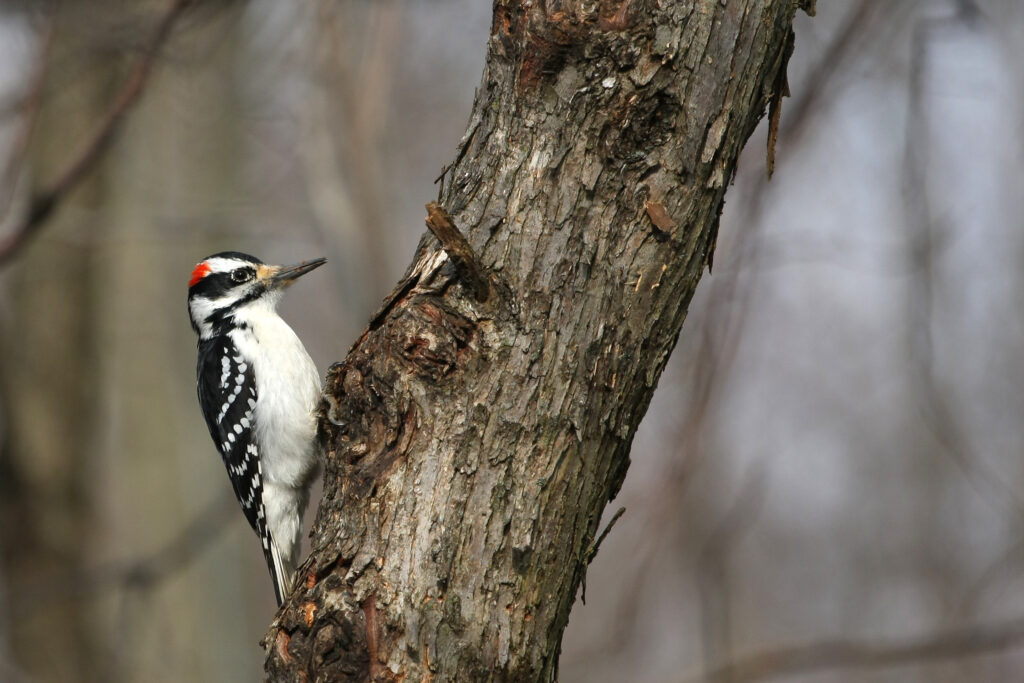
The Hairy Woodpecker is substantially bigger than the Downy Woodpecker, which is their primary distinction. Its length is around 7 to 10 inches (17.7 to 25.4 cm), and its wingspan is about 15 inches (38.1 centimeters).
White bars go down the tail, and the belly is white. The males may be distinguished from the ladies by the red mark on the back of their heads. The Female doesn’t, though.
The Hairy Woodpecker has a thicker and longer beak than the Downy Woodpecker.
Lifespan And Reproduction
The maximum lifespan is 16 years.
Depending on the location of the woodpeckers, breeding and nesting will take place between February and June. The ladies are frequently the ones that look after their area.
These woodpeckers will pick a spot in a tree 5-30 feet (1.5-9.1 meters) above the ground to build their nest. The hole itself is roughly 8-12 inches (20.3-30.4 centimeters) deep, with a diameter of around 1.5 inches (3.8 centimeters) at the hole’s entrance.
The female will have 3-6 eggs when she is ready to lay them, and they will incubate for 12–14 days after that. After hatching, the fledglings will depart the nest in around 28–30 days.
5. Northern Flicker

One of the largest woodpeckers is the northern flicker. Their wingspans are around 20 inches, and their bodies are approximately 11 to 12 inches (27.9 to 30.4 cm) long (50.8 centimeters).
These woodpeckers have no white on their wings and dark backs. They do have red at the nape of their neck and a black stripe across the top of their chest.
The black mark from the top of the bill back to the throat, which resembles a mustache, helps to differentiate the males from the females.
Because the shafts of their wings are yellow, these birds are sometimes referred to as “yellow-shafted flickers.” On the bottom of their wings, you can notice a bright yellow color as they are flying.
Lifespan And Reproduction
Maximum 9-year lifespan
Depending on the woodpeckers’ habitat, breeding takes place from February to July. They will build their nests from telephone poles, decaying tree trunks, and tree branches.
They will build their nest 6–15 feet/1.8–4.5 meters above the ground when they do so. Like the other woodpeckers, they will create holes in trees.
However, some have been observed making use of nesting boxes designed for larger birds, such as wood ducks or screech owls.
The female will generate 5-8 eggs when she gets ready to lay them. She will subsequently carry the eggs for 11 to 13 days of incubation. After hatching, the fledglings will depart the nest in around 25–28 days.
6. Pileated Woodpecker

The biggest woodpeckers in Pennsylvania and the entire country are pileated woodpeckers. Their wingspan may measure up to 29 inches, while their bodies range in length from 16 to 19 inches (38.1 to 48.2 cm) (73.6 centimeters).
The Ivory-Billed Woodpecker is the only woodpecker that could be bigger, although it’s probable that they’re extinct.
They have a full black back and tail, but their crest is a vivid red hue. The wings’ undersides are white. Because of the red spots on their cheeks, males may be identified as females. The red in the females’ crests are likewise less intense.
Lifespan And Reproduction
Lifespan: 13 years or less
When they are prepared, they will build their nest between 15 and 70 feet (4.5-21.3 meters) in the air. They’ll drill an oval-shaped hole through the tree to make the entry. It will be between 10 and 24 inches (25.4 and 61 cm) deep.
About 3-5 eggs, which are incubated for around 18 days, will be laid by the female. While the males will incubate the eggs exclusively at night, both parents will alternately do so throughout the day.
7. Red-Bellied Woodpecker
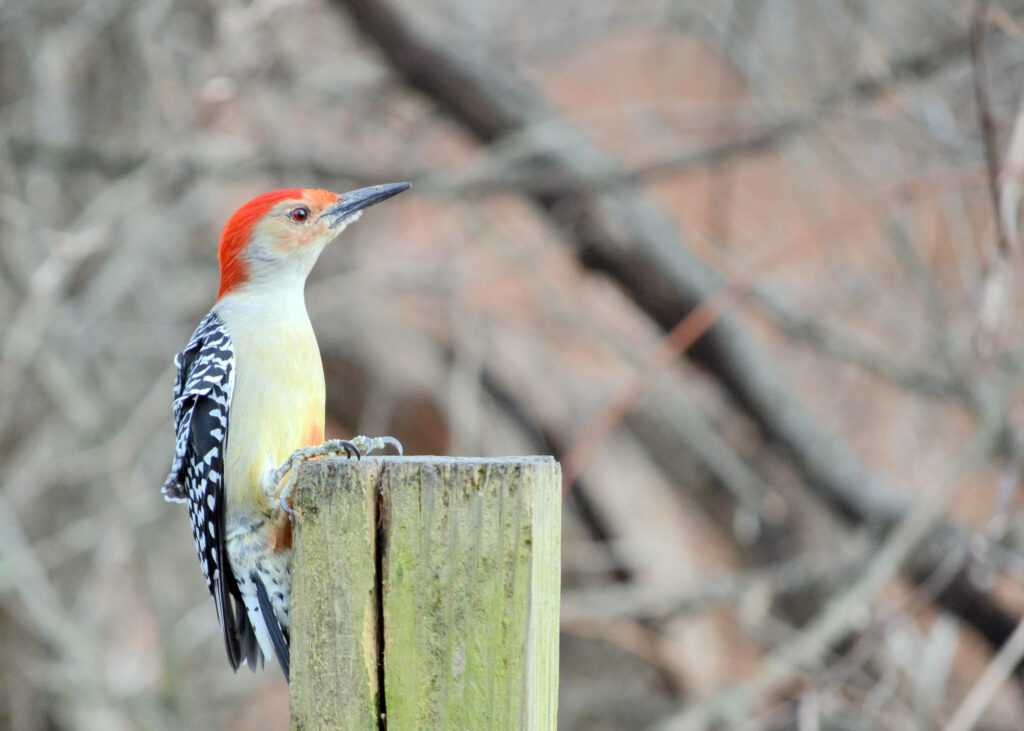
The Red-Bellied Woodpecker may reach a maximum length of 8 to 9 inches (20.3-22.8 cm). Their wingspan ranges between 15 to 18 inches (38-46 centimeters).
Their rump is white, and their cape is a vivid crimson color. They acquire their name from a tiny, almost perceptible red patch on their abdomen. Their face and the remainder of their belly are both light grey in hue.
The males may be identified from the females by their crimson nape of the neck and their red crown. Only the neck is crimson on the females.
Lifespan And Reproduction
Lifespan: 12 years or more
Red-Bellied Woodpeckers select new partners every season, although researchers believe they are monogamous. From early winter through late spring, they will select their companions.
Males will drum, tap on wood, and make a “kwirr” sound to attract females. The two will drum together against the wood when they are together as a means of communication.
The male and female will jointly select a nesting location during the months of March and April when nesting takes place.
The dead branches of living trees or dead trees themselves are used as nesting materials. About four eggs will be laid by the female, and they will be incubated for 12 days.
At roughly six days old, the chick’s eyes will start to open, and feather growth will start between days ten and twelve. After hatching, the fledglings will depart the nest between 24 and 27 days.
The fledglings will continue to be fed by their parents for up to 10 more weeks after they leave the nest, which happens about two days after they leave. The parents will start to drive the fledglings away if they try to stay any longer.
8. Black-Backed Woodpecker

The size of these woodpeckers is smaller. Their wingspan measures 4.8-5.2 inches, and their bodies are around 8.4-9.4 inches (21.5-24 cm) long (12.3-13.4 centimeters).
Black-Backed Woodpeckers have a white underside to their black back. Additionally, white are the sides, abdomen, breast, and throat. The black wings, however, have white stripes running across them.
With the exception of the white feather tips, the tail is mostly black as well. The nose to the nape of the neck is separated by a white stripe on the head’s black surface.
The yellow feather patch on the males’ top of the head helps to identify them from the females. Additionally, the color of the females is a little bit duller, and they have shorter bills than the males.
The Black-Backed Woodpecker has three toes as opposed to the typical four for woodpeckers. The remaining toe is facing backward while the other two are facing forward.
Lifespan And Reproduction
Lifespan: 6 to 8 years
Monogamous Black-Backed Woodpeckers only have one breeding season every year. They stay together all year long and seldom interact with other woodpecker species.
In April and May, they will start constructing their nest, raising it 7.5 feet (2.3 meters) above the ground. Breeding will really start in June. The female will deposit two to six eggs, each of which will need 12 to 14 days to develop.
Check out this article on Types of Woodpeckers in Georgia.
Conclusion
A special breed of bird is the woodpecker. They are members of the Picidae family and are easily identified by their propensity to hammer into tree trunks in search of insects and larvae.
Although there are several woodpecker species scattered over North America, this discussion was focused on the eight species that are found in Pennsylvania.
FAQ
What Distinguishes A Woodpecker?
The differences between woodpeckers and other birds can be attributed to a few traits. This is mostly the pointed bill that they utilize to chisel away at tree limbs and trunks. To ensure that the wood is damaged evenly, they peck at it in a variety of directions.
To begin with, their skull is thicker than that of the majority of birds. Additionally, bones are discovered between the cranium and the bill.
All birds have these bones, although they are not as securely bonded as woodpeckers. As they are jarringly banged on wood, this allows the bones a little bit of wiggle space.
Considering that a woodpecker may drill into a piece of wood up to 100 times per minute, further safety precautions are definitely required.
An Adult Female Woodpecker Is What Colour?
The faces of male and female pileated woodpeckers are striped in black and white, and they have a vivid red crown.
Last Updated on March 22, 2023 by Lily Aldrin
